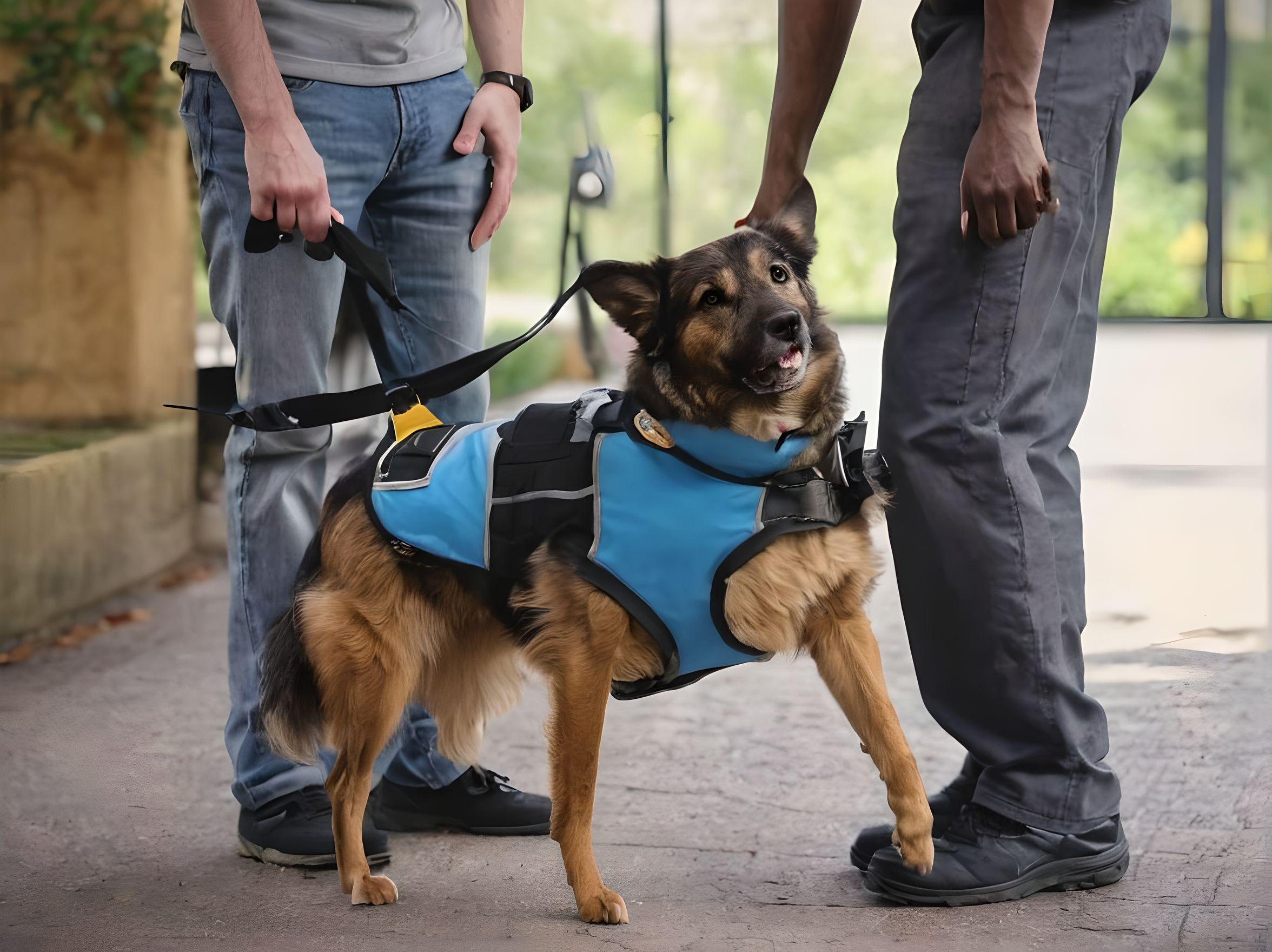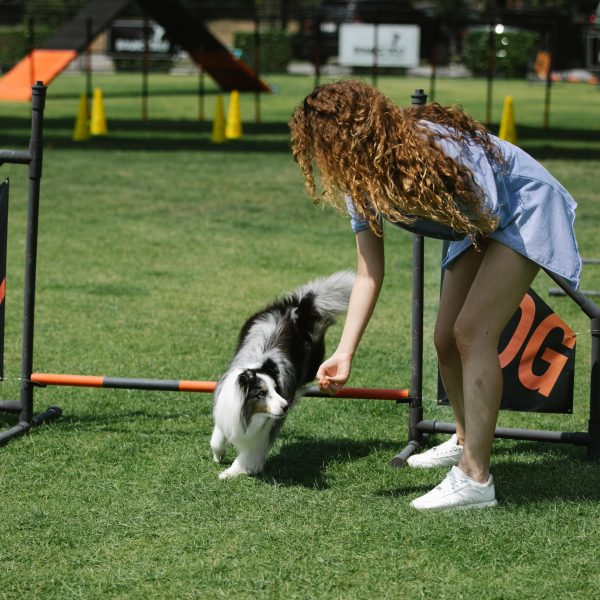With the increasing awareness of the impact animals can have, there is a growing demand for service and emotional support pets. These furry companions offer not only friendship but solace and aid to people facing various challenges, be it physical disabilities or emotional hurdles. To prepare your pet for these roles, they need training to ensure they can carry out their responsibilities effectively and consistently. This article delves into the steps and factors to consider when training your pet for service or emotional support positions.
Understanding the Distinction: Service Animals vs. Emotional Support Animals
Before delving into the training process, it’s crucial to grasp the difference between service animals and emotional support animals (ESAs):
Service Animals
Service animals, typically dogs, are trained to perform tasks for individuals with disabilities, such as guiding visually impaired individuals, alerting those with hearing impairments, assisting wheelchair users, or sensing seizures. Service animals are afforded public access rights under the Americans with Disabilities Act (ADA).
Emotional Support Animals
ESAs offer comfort and assistance to individuals dealing with psychological conditions. Unlike service animals, ESAs do not require task training and do not have the same level of public access rights under ADA regulations. However, they might be permitted in housing situations per the guidelines of the Fair Housing Act and on flights under certain circumstances.
Choosing the Right Pet
Not every pet is suitable for service or emotional support purposes. The perfect candidate should possess a calm demeanor, be sociable, adaptable, and receptive to training. While dogs are commonly selected as service animals, other animals like cats and miniature horses can also undergo training for support roles.
Socialization and Fundamental Obedience
Early socialization and fundamental obedience training form the basis for any pet aiming to become a service or emotional support animal.
Socialization
Introduce your pet to various settings, individuals, and other animals from a young age. This aids in their adjustment and reduces the likelihood of being startled or anxious in different environments. Socialization should cover:
- Various environments (rural, urban, indoor, outdoor)
- Different sounds (traffic noise, household appliances, crowds)
- Interactions with people (children, adults, people with disabilities)
- Encounters with other animals (dogs, cats, etc.)
Basic Obedience
Your pet should master basic commands like sit, down, stay, and heel. These instructions lay a solid foundation and ensure they respond well in different situations. Consistency and positive reinforcement play a crucial role in obedience training.
Training Service Animals at an Advanced Level
For a pet to serve as a service animal, they need to undergo training tailored to the tasks they will perform. This training is typically more rigorous and can be broken down into phases:
Task-Specific Training
Identify the tasks that your service animal will need to carry out. These tasks may include:
- Guiding visually impaired individuals
- Alerting individuals to sounds
- Assisting with wheelchair mobility
- Providing stability and balance support
- Retrieving items
- Alerting to medical conditions like low blood sugar or seizures
Each task necessitates unique training methods. For instance, guiding an impaired person involves teaching the animal how to navigate obstacles, while a medical alert dog must learn how to detect and respond to cues from their handler.
Training for Public Settings
Service animals should exhibit proper behavior in public places. This entails:
- Remaining composed in various environments such as restaurants, stores, and public transport
- Ignoring distractions like people, animals, or food
- Behaving appropriately in public settings, refraining from jumping, excessive barking, or showing aggression
Public access training ensures that service animals can carry out their responsibilities without causing disturbances or posing risks to themselves or others.
Reinforcement and Adaptability
Reinforcement involves practicing the animal’s training in different settings and situations to ensure consistency. Adaptability means the animal can perform trained tasks regardless of the environment or circumstances. Both aspects are vital for a well-trained service animal.
Training for Emotional Support Animals
While ESAs do not need task-specific training like service animals, they should still be well-behaved and attuned to their owner’s needs. Key focus areas for ESA training include:
Fundamental Obedience and Etiquette
Similar to service animals, ESAs should obey basic commands and display good manners by avoiding jumping on people, excessive barking, and being house trained.
Managing Stress and Anxiety
ESAs often offer comfort to individuals dealing with anxiety or other psychological struggles. The animal itself must stay composed without showing signs of stress or anxiety. Training should involve exposure to various environments and stimuli, reinforcement for calm behavior, and desensitization to common stress triggers like loud noises or crowded places.
Building a Strong Connection and Understanding
Creating a strong bond between a support animal and their owner is essential. Training should focus on strengthening this bond and ensuring that the animal is in tune with their owner’s emotions. Methods to achieve this include:
- Spending quality time together
- Participating in activities that the pet enjoys
- Rewarding the pet for displaying attentiveness and providing support
Certification and Legal Aspects to Consider
Although service animals do not necessarily need certification, having documentation from a trainer can be advantageous, especially when it comes to traveling or accessing public places. Emotional support animals may require a letter from a mental health professional to qualify for housing or travel accommodations.
Continuous Training and Care
Training for service animals and emotional support animals is an ongoing journey. Consistent practice and reinforcement of commands and tasks are vital to keep the animal’s skills sharp. Regular visits to the veterinarian also ensure that the animal remains healthy and fit for their designated role.
Training a pet for service or emotional support purposes can be demanding. It calls for patience, commitment, and a thorough understanding of the animal’s abilities and limitations. By dedicating time to training and socialization, pet owners can guarantee that their animals offer effective assistance, thereby improving the quality of life for those who depend on them. These unique animals play a crucial role in the lives of their owners, providing support for tasks like assisting impaired individuals or offering comfort during moments of anxiety.








